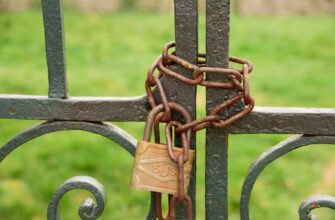- Backup Private Key Anonymously: A Beginner’s Secure Guide
- Why Backing Up Your Private Key is Non-Negotiable
- The Hidden Dangers of Non-Anonymous Backups
- Step-by-Step: Backup Your Private Key Anonymously
- Best Practices for Anonymous Storage
- Critical Mistakes Beginners Must Avoid
- Frequently Asked Questions
- Can I use a USB drive for anonymous backup?
- How often should I update my backup?
- Is memorizing my private key safe?
- What if I lose my anonymous backup?
- Are metal backups (e.g., Cryptosteel) anonymous?
Backup Private Key Anonymously: A Beginner’s Secure Guide
Losing access to your cryptocurrency wallet can mean losing your funds forever. That’s why backing up your private key—the cryptographic password controlling your assets—is absolutely critical. But standard backups often leave digital footprints, exposing you to hacking or surveillance. This guide teaches beginners how to backup private keys anonymously, ensuring no one traces your security measures back to you. We’ll cover simple, non-technical methods prioritizing both safety and privacy.
Why Backing Up Your Private Key is Non-Negotiable
Your private key is the only proof of ownership for crypto assets. Lose it, and recovery is impossible. Common risks include:
- Hardware failure (e.g., damaged computer or phone)
- Accidental deletion
- Malware or ransomware attacks
- Physical theft of devices
Without an anonymous backup, even security-conscious users risk exposing their holdings through cloud storage logs, email trails, or metadata.
The Hidden Dangers of Non-Anonymous Backups
Standard backup methods create vulnerabilities:
- Cloud Storage: Services like Google Drive or iCloud log IP addresses and link backups to your identity.
- Email: Sending keys to yourself creates a permanent, hackable record.
- Unencrypted Files: Storing keys in text files on devices leaves them exposed to spyware.
An anonymous backup severs all ties between your identity and your key, making it invisible to prying eyes.
Step-by-Step: Backup Your Private Key Anonymously
Follow this beginner-friendly process using offline methods:
- Write It Down: Copy your private key manually onto acid-free paper with a permanent ink pen. Never type it.
- Use a Cipher: Encode the key by shifting letters/numbers (e.g., A→B, 1→2). Memorize the cipher rule—don’t write it down.
- Split the Key: Divide the encoded key into 2-3 parts. Store each fragment in separate physical locations (e.g., home safe, trusted relative’s house).
- Camouflage: Hide the paper in an unmarked book or false container. Avoid digital photos or scans.
Best Practices for Anonymous Storage
- No Digital Traces: Never email, message, or upload backups—even encrypted.
- Physical Security: Use fireproof/waterproof containers. Laminate paper backups.
- Location Diversity: Store key fragments in different cities if possible.
- Zero Metadata: Buy supplies (paper, pens) with cash to avoid purchase records.
Critical Mistakes Beginners Must Avoid
- ❌ Storing keys on password managers or notes apps
- ❌ Sharing backup details over calls/texts
- ❌ Using printers (they often save internal logs)
- ❌ Reusing storage spots for multiple keys
Frequently Asked Questions
Can I use a USB drive for anonymous backup?
No. USB drives connect to devices that log activity, and hardware can fail. Paper is more reliable and leaves no digital trail.
How often should I update my backup?
Only when you generate a new private key (e.g., creating a fresh wallet). Existing keys don’t change—backup once securely.
Is memorizing my private key safe?
Risky. Human memory is unreliable. Use physical anonymous backups as your primary method, with memorization as a temporary fallback.
What if I lose my anonymous backup?
Immediately transfer funds to a new wallet with a freshly backed-up key. Never attempt to “recover” fragments from memory alone.
Are metal backups (e.g., Cryptosteel) anonymous?
Yes, if purchased with cash and engraved manually. Avoid models linking to apps or requiring registration.
Final Tip: Test your backup before transferring significant funds. Restore a small test wallet to confirm accessibility. Your anonymity and crypto security depend on it.








